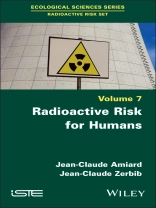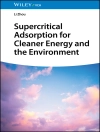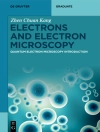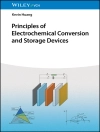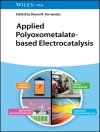Once scientists discovered radioactivity, they soon recognized its dangers. However, the assessment of radioactive risk to humans is still the subject of heated debate.
In this book, the authors present a summary of past and recent scientific work on estimating radioactivity in the anthroposphere and the radioactive contamination of human beings. They describe the various sources of exposure to ionizing radiation (external, internal and dietary) and estimate the irradiation doses suffered by humans under various conditions (both naturally occurring for the general public and professionals, and from accidents). The harmful effects of ionizing radiation at various biological levels (molecular, cellular and tissue) and health effects at the individual level are also discussed.
Particular focus will be placed on radiation-induced occupational illnesses. The relationship between doses of ionizing radiation and its harmful effects is discussed with reference to high, medium and low doses. The controversies on this subject are outlined, and international and French regulatory values are provided. Finally, an estimate of the radioactive risk for humans is suggested.
Зміст
Preface xiii
Acronyms and Abbreviations xxiii
Introduction xxxi
Chapter 1 Radioactive Danger 1
1.1 Introduction 1
1.2 Radionuclides and radioelements 4
1.3 Radionuclide-related dangers 5
1.4 Elements of nuclear physics 6
1.4.1 Nuclear structure 7
1.4.2 Electrons 9
1.4.3 Stability of the atomic nucleus and nuclear reactions 10
1.4.4 Various types of ionizing radiation 12
1.4.5 Radiation properties 21
1.5 References 22
Chapter 2 Radioactive Contamination of the Anthroposphere 25
2.1 Introduction 25
2.2 Sources of radioactive contamination of the anthroposphere 26
2.3 Natural radioactive contamination of the anthroposphere 28
2.3.1 Natural contamination of physical environments 29
2.3.2 Natural food contamination 31
2.3.3 Natural contamination of seafood 31
2.3.4 Natural contamination of buildings 32
2.4 Anthropogenic radioactive contamination 33
2.4.1 Anthropogenic radioactive contamination of the physical environment 33
2.4.2 Anthropogenic radioactive contamination of seafood products 35
2.4.3 Anthropogenic radioactive contamination of other foods 36
2.4.4 Radioactive contamination of polluted sites 36
2.5 Conclusions 39
2.6 References 40
Chapter 3 Human Exposure to Radionuclides 43
3.1 Introduction 43
3.2 Types of exposure to ionizing radiation 43
3.2.1 The distinction between irradiation and contamination 43
3.2.2 Multiple exposure pathways 45
3.3 External exposure pathways 45
3.3.1 External exposure from natural sources 46
3.3.2 External exposure of artificial origin 47
3.4 Internal exposure pathways 49
3.4.1 Radionuclide penetration routes (contamination) 49
3.4.2 Internal exposures of natural origin 50
3.4.3 Internal exposure of artificial origin 50
3.5 Conclusions 50
3.6 References 51
Chapter 4 Radioactive Contamination of Food and Trophic Transfer 53
4.1 Introduction 53
4.2 Transfer of radionuclides from food to humans 53
4.2.1 Human digestion 54
4.2.2 Distribution of radionuclides in foodstuffs 55
4.2.3 Bioaccessibility 55
4.2.4 Bioavailability 56
4.2.5 Absorption factors during ingestion 57
4.3 Transfers from the environment to animal products consumed by humans 57
4.3.1 Food transfer coefficients 57
4.3.2 The influence of product processing 60
4.4 Transfers from the environment to plant products consumed by humans 61
4.5 Transfer from drinking water to humans 63
4.6 Environmental monitoring of products consumed by humans 64
4.7 References 66
Chapter 5 Human Bioaccumulation of Radionuclides 71
5.1 Human bioaccumulation of radionuclides 71
5.1.1 Transmembrane passage 71
5.1.2 Epithelial and cerebral barriers 73
5.1.3 Body distribution 74
5.1.4 Molecular mechanisms 76
5.1.5 Bioaccumulation of natural radionuclides 76
5.1.6 Bioaccumulation of artificial radionuclides 78
5.2 Protecting people from radionuclides 85
5.2.1 The search for chemical “radioprotectors” 85
5.2.2 The use of potassium iodide tablets in the event of a nuclear accident 86
5.2.3 Short and extended containment 87
5.2.4 Radiation protection is all about prevention 87
5.3 Therapeutic removal of radionuclides from humans 87
5.4 Conclusions 89
5.5 References 90
Chapter 6 Estimates of Human Radiation Doses 97
6.1 Introduction: from exposure to dose 97
6.2 Expressing exposure 98
6.2.1 Absorbed dose 98
6.2.2 Equivalent dose 98
6.2.3 Effective dose 100
6.2.4 Committed dose due to internal contamination 101
6.3 Limits to the estimation of effective doses 105
6.3.1 Modeling 105
6.3.2 Microdistribution 106
6.3.3 Transmutation 106
6.3.4 Interactions between radiotoxicity and chemical toxicity 106
6.3.5 Individual variability 107
6.4 Dose rates 107
6.5 Occupational doses 107
6.6 Collective doses 108
6.7 References 109
Chapter 7 Estimating Human Radiation Doses 111
7.1 Natural external radiation doses 111
7.1.1 Telluric exposure 111
7.1.2 Cosmic exposure 113
7.2 Natural internal radiation doses 114
7.2.1 Population exposure to radon 114
7.2.2 Internal exposure to natural radionuclides 119
7.2.3 Radon exposure of workers 121
7.3 Estimates of artificial radiation doses to humans 121
7.3.1 External and internal medical exposures 122
7.3.2 Exposure due to atmospheric nuclear blasts 123
7.3.3 Artificial exposure through food and drink 123
7.3.4 Exposure to seafood products 124
7.3.5 Occupational exposure 125
7.4 Some cases of human exposure 126
7.4.1 Guinea pigs 126
7.4.2 Estimates of exposure around nuclear facilities 128
7.4.3 Estimates of exposure due to fallout from Chernobyl and Fukushima 128
7.5 References 129
Chapter 8 The Biological Effects of Ionizing Radiation at the Molecular and Cellular Level 133
8.1 Physico-chemical processes responsible for biological effects 133
8.1.1 Physical interactions of ionizing radiation with living matter 134
8.1.2 Physico-chemical reactions 134
8.2 The effects of ionizing radiation at the molecular level 135
8.2.1 The effects of ionizing radiation on DNA 136
8.2.2 Epigenetics 140
8.3 The effects of ionizing radiation at the sub-cellular level 143
8.3.1 The main cell organelles 143
8.3.2 The organization of DNA into nucleotides or chromosomes 143
8.3.3 The effects of ionizing radiation on genomic instability and mutations 143
8.3.4 The appearance of mutations 144
8.4 The consequences of irradiation at cellular level 147
8.4.1 Cell structure 147
8.4.2 The cell cycle 147
8.4.3 Cell division 147
8.4.4 Targeted effects of ionizing radiation 149
8.4.5 Non-targeted effects of ionizing radiation 149
8.5 Quantifying the effects of ionizing radiation using biomarkers 153
8.5.1 Biomarkers specific to the effects of ionizing radiation 153
8.5.2 Biomarkers specific to thyroid cancer 156
8.6 Conclusions 157
8.7 References 159
Chapter 9 Health Effects of Ionizing Radiation at the Individual Level 167
9.1 Introduction 167
9.1.1 Historical study of Hiroshima and Nagasaki survivors 167
9.1.2 Assessment of doses received by survivors of bombs dropped on Japan 168
9.2 The adverse effects of ionizing radiation depend on the age at exposure 170
9.2.1 Adverse effects of ionizing radiation on the embryo and fetus 170
9.2.2 The harmful effects of ionizing radiation on children 175
9.3 Radiation-induced cancers in adults 184
9.3.1 The effects of high doses, acute radiation syndrome 185
9.3.2 The survivors of Hiroshima and Nagasaki 186
9.3.3 Radiation-induced cancers as a function of gender 189
9.3.4 Effects on red bone marrow 192
9.4 Adverse effects of ionizing radiation on different tissues and organs 193
9.4.1 Effects on the circulatory system 195
9.4.2 Effects on the digestive system 196
9.4.3 Effects on the reproductive system 197
9.4.4 Effects on the lens 199
9.4.5 Effects on the integumentary system 203
9.4.6 Effects on the central nervous system 204
9.4.7 Effects on the respiratory system 204
9.5 The transgenerational effects of ionizing radiation 205
9.5.1 Hereditary transmission of genetic information 205
9.5.2 Findings on hereditary effects 206
9.6 Individual variability in the adverse effects of ionizing radiation 207
9.7 Conclusions 208
9.7.1 Effects of irradiation in utero and in early childhood 208
9.7.2 Effects of radiation on children 209
9.7.3 Effects of irradiation at puberty 210
9.7.4 Effects of irradiation in adulthood 210
9.7.5 Transgenerational effects 211
9.8 References 212
Chapter 10 Occupational Diseases Caused by Ionizing Radiation 221
10.1 History of the first radiation injuries caused by X-rays and radium 221
10.1.1 The first X-ray-induced cancers 222
10.1.2 A major survey of radiation-induced cancers carried out in 1914 222
10.1.3 The first radium-226-induced cancers 223
10.2 The creation and difficult development of the occupational disease recognition system 224
10.2.1 The long beginnings of the law recognizing occupational diseases in France 225
10.2.2 Contemporary knowledge of toxic substances and their deleterious effects 226
10.2.3 Implementation of the law on the recognition of occupational diseases in France 226
10.2.4 Treatment of radiation-induced diseases 227
10.3 Radiation-induced occupational diseases recognized in France since 1948 228
10.3.1 The first statistical data on recognized radiation-induced occupational diseases 228
10.3.2 Detailed data on recognized radiation-induced occupational diseases 229
10.3.3 Comparison of the risk of radiation-induced cancers with the risk of all occupational cancers in France 231
10.4 Diseases recognized in Europe 232
10.5 Conclusions 233
10.6 References 234
Chapter 11 The Dose–Response Relationship to the Effects of Ionizing Radiation 239
11.1 Introduction: the dose–response relationship 239
11.2 Dose–response relationships for high doses 239
11.2.1 Survivor studies 240
11.2.2 Other studies 241
11.3 Dose–response relationships for low doses 242
11.3.1 Epidemiological studies 242
11.3.2 Controversies over responses to low doses 256
11.4 Conclusions 265
11.5 References 266
Chapter 12 International and French Regulatory Values 277
12.1 Introduction 277
12.2 International expertise and organization 277
12.3 International and European recommendations and their evolution 280
12.4 Radiation protection standards and regulatory limits 281
12.4.1 Some examples of international radiation protection standards 281
12.4.2 European directives and transfer into French law 282
12.4.3 Changes in radiation protection standards over time 283
12.5 Radionuclide toxicity and radiotoxicity 283
12.6 Food standards 284
12.7 References 286
Chapter 13 General Conclusions and Perspectives 289
13.1 Introduction 289
13.2 Knowledge of the effects of ionizing radiation on humans 290
13.2.1 Assured knowledge of the effects of ionizing radiation on humans 290
13.2.2 Imperfect knowledge of the effects of ionizing radiation on humans 293
13.2.3 Towards a better understanding of the effects of ionizing radiation on humans 297
13.3 Strengths and weaknesses of the radioactive risk assessment method 302
13.3.1 Shortcomings in identifying radioactive hazards 302
13.3.2 Shortcomings in quantifying radioactive contamination of the anthroposphere 302
13.3.3 Shortcomings in the identification of exposure pathways 303
13.3.4 Shortcomings in estimating exposure doses 303
13.3.5 Gaps in the assessment of adverse effects at various biological levels 303
13.3.6 Shortcomings of the dose versus adverse effect relationship 303
13.3.7 Shortcomings in the choice of no-adverse-effect values 304
13.3.8 Shortcomings in the organization of official standards setting 304
13.3.9 Shortcomings in radioactive risk assessment 304
13.4 Towards a new approach to estimating radioactive risk 305
13.4.1 Limitations of the ICRP approach 305
13.4.2 Questionable parameters 307
13.4.3 The evolution of the ICRP’s concept of radiation protection 308
13.4.4 A new approach to radiation protection 309
13.5 Conclusions 310
13.6 References 310
Glossary 317
Index 319
Про автора
Jean-Claude Amiard is a Doctor of Science (State) in radioecology, Director of Research Emeritus at the CNRS (University of Nantes, France) and former Associate Professor in Quebec and China. He is the author of more than 250 publications, 80 books/chapters and 150 communications at international conferences.
Jean-Claude Zerbib is an experienced radiation protection engineer. He has managed a laboratory specializing in nuclear analysis and the radiation protection of accelerators. He has also overseen radioactive waste management and measurement and site decontamination. He is the author of more than 140 publications.
